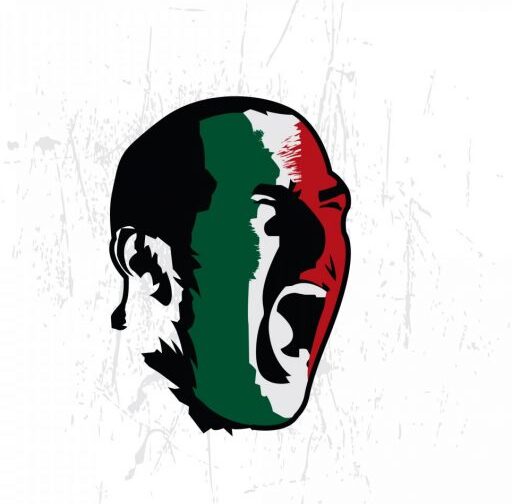 It is not too many seasons ago since Roma installed Luis Enrique as coach, who tried to play football the Barcelona way. The project was charmingly described as “a little baroque but very effective” by sporting director Walter Sabatini. Despite all the clamor came with those good intentions, they finished the season a disappointing seventh and Luis Enrique was jettisoned.
It is not too many seasons ago since Roma installed Luis Enrique as coach, who tried to play football the Barcelona way. The project was charmingly described as “a little baroque but very effective” by sporting director Walter Sabatini. Despite all the clamor came with those good intentions, they finished the season a disappointing seventh and Luis Enrique was jettisoned.
The experiment of 2011/12 is a distant memory, and a couple more coaches have passed under the Ponte Duca D’Aosta since then; but the current incumbent has looked to history — both of Roma and Barcelona — and started the Lupi’s season in a formation without a recognised striker.
Rudi Garcia’s side lined up and won against Fiorentina, operating with a back four, two deep lying midfielders (Daniele De Rossi, who dropped back to gather the ball, and Radja Nainggolan, who both assisted Gervinho’s goal and scored one of his own) and four ostensibly attacking players, all of whom were set deeper than a conventional prima punta (target forward): Miralem Pjanic, Francesco Totti, Gervinho and Juan Iturbe.
It worked. Roma won their opener 2-0 and looked comfortable throughout. Mattia Destro came on as a late substitute, offering a different dimension as Fiorentina pressed for an equalizer. The starting eleven. however, looked well-set, well-drilled and as good if not better than last season.
Just as when Luciano Spalletti operated his Roma a 4-6-0 formation, there is a possibility Garcia came to his set-up more by accident than design. Although the outcome suggests there is undoubted method to the Frenchman’s line-up.
 In Gervinho, Pjanic, and new signing Juan Iturbe, Roma possess three players whose strength is running with the ball. Additionally, Adem Ljajic sits in reserve and Seydou Keita is well-used to that midfield-heavy set-up from his time in Barcelona. Both entered the field as substitutes against Fiorentina.
In Gervinho, Pjanic, and new signing Juan Iturbe, Roma possess three players whose strength is running with the ball. Additionally, Adem Ljajic sits in reserve and Seydou Keita is well-used to that midfield-heavy set-up from his time in Barcelona. Both entered the field as substitutes against Fiorentina.
Within a team whose primary method of attack is the counter-attack, their willingness to take on opponents with the ball at their feet negates the option of playing the ball into — and waiting for it to return from — a central striker.
With Daniele De Rossi and Francesco Totti both well able to play through-balls into those players’ feet, or for them to run onto, the attack can take shape in a number of different ways. Against Fiorentina, the best of Roma’s attacking came down the right through Gervinho, but it is easy to imagine a situation where Ashley Cole and Iturbe dominate proceedings rather than the Ivorian and Vasilis Torosidis.
Defending is a difficult task in modern football. Times have changed from when attacking players had set positions and remained almost stationery in pursuit of them. The fact that the expression “old-fashioned” is so often used to describe the “Number Nine” today is indicative of that. As it happens, Roma do have Marco Borriello to call on should they feel the need to fill that particular void.
The difficulty that Roma’s strikerless formation poses is that there is no way for defenders to know which player will be the most advanced. The defence has to hold its shape to a point in order to retain solidity, but in doing so, they find themselves susceptible to quick bursts of acceleration, passes in-between or behind them, or simply attacking players are able to play more directly. Indeed these are all attributes that Roma’s attack boasts of.
In Italy, there will be few sides able to cope with the speed and fluency of the Giallorossi’s play. Last season’s successful rubric has been refined over the summer. Yet, in addition to Serie A, this season brings a Champions League campaign to the Stadio Olimpico.
Famously, Roma have a fractious Champions League history with a strikerless formation; Spalletti’s side progressed to the quarter finals, where they went to Manchester United with nobody up front, and were trounced 7-1 for that impudence. This year’s campaign will bring the Giallorossi up against Pep Guardiola’s Bayern side.
 It would be harsh to judge Roma against Europe’s top teams. Yet, it was only against the best sides they faced that last season’s Roma came unstuck, losing only at Napoli and Juventus before the last three games (averaging 2.40 points per game against the bottom half, and 2.06 against the top). As such, it will only be by defeating their title rivals and succeeding in Europe that their campaign can be judged a success.
It would be harsh to judge Roma against Europe’s top teams. Yet, it was only against the best sides they faced that last season’s Roma came unstuck, losing only at Napoli and Juventus before the last three games (averaging 2.40 points per game against the bottom half, and 2.06 against the top). As such, it will only be by defeating their title rivals and succeeding in Europe that their campaign can be judged a success.
To that end, Rudi Garcia has developed a system that might contain no out-and-out striker, but will create chances for the high-quality of attacking players he has at his disposal. It is a brave move, but the Frenchman has proven himself a brave man before.
Roma travel to Juventus in early October. That match will represent an early litmus test for both teams’ progress. Only then will we know if Garcia’s bravery was based on wisdom.


